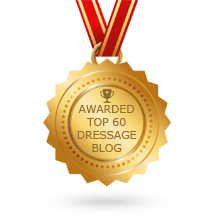|
François de la Guérinière
This exercise [shoulder in] has so many benefits that I regard it as the alpha and omega of all exercises for the horse which are intended to develop complete suppleness and perfect agility in all it’s parts. Nuno Oliveira In the shoulder-in hold your body against your outside elbow. Charles Harris. The most common fault made by riders in doing shoulder-in is to have the horse more bent in front of the wither (or saddle) than behind it. The horse must be the same in front of the withers (or saddle) as he is behind. Nuno Oliveira Correctly done the shoulder-in gives great results as it relaxes and straightens the horse. Alois Podhajsky The most important aid [in half pass] is given by the rider’s inside leg which pushes the horse forward and is responsible for correct bend. Alois Podhajsky The position of the [horse’s] head [in half pass] should be such that the neck is not more bent than the whole body. Nuno Oliveira Don’t exaggerate the bend in the half pass. Otherwise you block the inside shoulder. Nuno Oliveira from “An Old Master trainer to Young Trainers” Practice shows us that a horse cannot give his back before being curved (laterally) around the inside leg. The rider who turns the head to the inside without the horse first relaxing in the inside curve of his body only achieves a twisted and resisting position of the head. It is the inside leg which is active, and what is necessary is that the horse turns the head around the inside leg without having more weight on either the inside shoulder or the outside shoulder. Nuno Oliveira from “Horses and Their Riders” One must enter the circle with the outside shoulder of the rider going forwards, parallel to the outside shoulder of the horse and not with an action of the inside rein. He [the horse] should make circles, in spirals, making them bigger or smaller by the rider’s legs, which guide and control the horse’s body on each circle. © Training Riders, Transforming Horses
de la Guérinière
M. de la Broue, and after him the Duke of Newcastle, say that in order to have a good hand, it must be light, gentle and firm. This state does not proceed solely from the action of the hand, but principally from the seat of the rider; for when the body is unbalanced or askew, the hand cannot be in its proper position, and the rider concerns himself primarily with keeping his seat. Furthermore, the legs must act in consonance with the hand, otherwise the effect thereof will never be correct; such consonance is called, in the terminology of the art, accord of hand and heel, which is the perfection of all aids Kurt Albrech Reins and legs can never compensate for an incorrect placement of the rider’s weight! G.Steinbrecht The skill of the hand can justifiably be considered a measure of the rider’s total skill. It is completely erroneous to believe that good hands could be an isolated favourable characteristic of some riders. Rather, they are the result of a perfect seat and fine feeling. G.Steinbrecht If the rider artificially applies more weight, the stirrup aid results which has become indispensable for all driving aids. It becomes a major fault if it is used to hold onto the stirrups in order to prevent their loss, or if it becomes a support for the seat. Riders who make such an error are still lacking in the fundamentals of their art, and they must first perfect their seat, and particularly their balance. de la Guérinière Elegance on horseback consists of a straight and free position as a result of a well balanced body: as a result the rider maintains, during all the movements the horse makes, without losing his seat, as much as he is able to, in an appropriate balance, an air of comfort and freedom, which makes him an elegant rider. Nuno Oliveira You must relax your waist and your back to go with the back of the horse and keep your bottom in the saddle. William Cavendish Now a good Seat is of such Consequence, as you shall see hereafter, that it is One of the chief Things maketh a Horse go perfectly; the very Manner of sitting being almost beyond all other Helps |
AuthorDiane Followell Classical Dressage Trainer 
|
Telephone+44 (0)7931551014
|
|
© Diane Followell 2015 -2024.
All Rights Reserved.
All images and content are copyright Diane Followell unless otherwise stated.
All Rights Reserved.
All images and content are copyright Diane Followell unless otherwise stated.

 RSS Feed
RSS Feed

